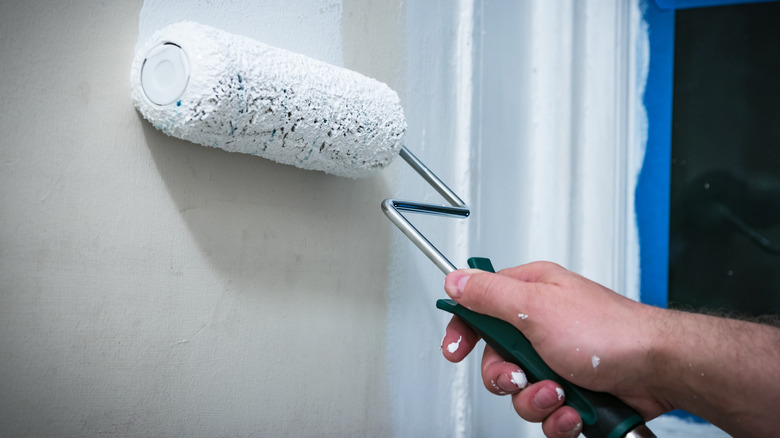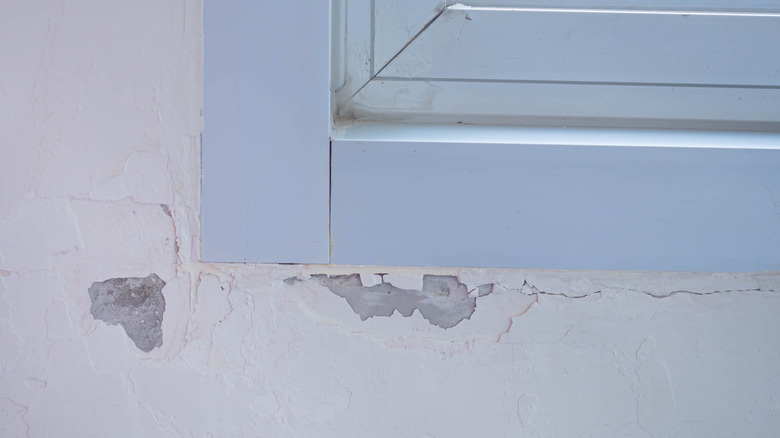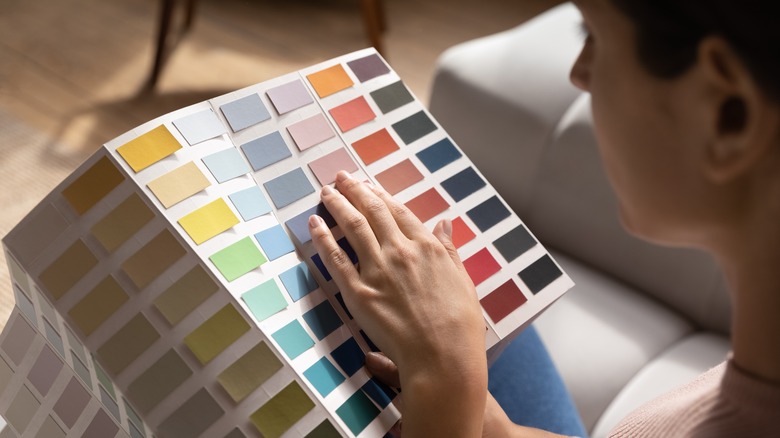The Best Way To Touch Up Paint So You Don't Have To Repaint The Entire Wall
Painting your walls is a somewhat laborious task, requiring lots of prep work, time, and patience to do it right. Alternatively, you'll have to pay professional painters, which can be expensive. Generally, according to PaintRite Pros, you're supposed to paint your walls at least every five years. This full-scale paint job may need to come sooner in more heavily trafficked rooms, like hallways, or in mess-prone areas, like kitchens and children's rooms.
Life happens between these repaints, though, and you may notice unsightly scrapes, lines, stains, discoloration, etc., as time goes on. This is especially true for the previously mentioned mess-prone rooms. Instead of spending days repainting whole walls over small blemishes, you can touch up the damaged areas. It isn't as simple as just adding a fresh coat of paint to the mark, but it is not too complicated either. The following tips will also prolong the overall life of your paint job.
Know what can and can't be touched up
Before getting together materials, you should first figure out if your wall even can be touched up. Touching up paint is a great way to fix specific issues quickly, but it won't fix every blemish or error. Before renewing your walls, you should know that the color will likely not match exactly. This is for a few reasons. One, paint naturally fades over time, so even if you buy the same color to touch up your walls, it will likely be slightly more pigmented. The other factor is the wicking rate, which will be covered later, but is essentially the rate at which the paint absorbs into the wall, per Sherwin-Williams.
How does the wicking rate affect the potential for touch-ups, then? As New Life Painting points out, if the damage or blemish on your wall is large, you'll only be replacing it with a considerable, unmatched swath of paint. There are ways to change the wicking rate and make it match better, but touch-ups like this are best done in more inconspicuous areas. The damage's severity also influences whether you can touch up your paint. Minor, surface-level blemishes, like scuffs or stains, can more easily be covered. If there are holes in the wall, large dents, or water damage, you'll need to consult a professional or patch it up yourself before painting, via Anderson Painting.
Touch-up tips
As for how to actually touch up paint, as stated earlier, one of the most significant issues is the wicking rate. Sherwin-Williams notes that the wicking rate is how fast the paint loses water as it dries on the wall, which impacts the final color. If you paint a swatch of the same color on old paint, the wicking rate will be different and result in a slightly different shade once dry. You can help counter this by diluting it with roughly 5 to 10% water.
You should also follow all basic preparatory work, advises Anderson Painting. This includes thoroughly cleaning the wall with soap and water to avoid trapping any dirt and debris, plastering any holes, or repairing any damage. Finally, make sure you have an identical paint swatch. If you know the paint brand, color, and sheen you used initially, simply repurchase it. If you don't, grab a sharp razor and scrape or cut off a bit of paint in an inconspicuous area. Then, take it to a paint store and have them color match it, via Chism Brothers Painting. There are also a variety of apps that will do this for you, but lighting can impact the outcome.


